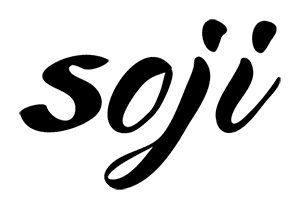Leading Through Change
In this post, we’ll share a set of core references that informed our design approach for a recent change leadership program. The program was structured around three core roles: Framing the Change, Empowering through Conversations, and Embedding with Habits and Routines. This post outlines the primary influences and resources that shaped the design of the program, as well as the customised learning resources that supported the experience.
1. Framing the Change Vision
This module focuses on the leader’s role in creating a compelling vision for change. It’s about understanding context, scripting key moves and using story to provide a sense of direction and purpose for the team, helping them understand why the change is happening and where they are headed.
-
The Execution Shortcut—Jeroen De Flander: Introduces the Head–Heart–Hands model, guiding leaders to assess how clearly they’ve communicated change (Head), how genuinely committed they feel (Heart), and how consistently they’re acting to drive it (Hands).
-
First Things First – Stephen R. Covey, A. Roger Merrill, Rebecca R. Merrill: Provides a guide to prioritizing what matters most in both personal and professional life (Big Rocks).
-
The Discipline of Execution – Chris McChesney, Sean Covey, and Jim Huling: Offers a framework for executing on critical priorities and focuses on the importance of focus and discipline to achieve strategic goals.
-
Made to Stick – Chip Heath & Dan Heath: Offers insights on crafting messages that are memorable and impactful, which is essential for any change narrative.
-
Dare to Lead – Brené Brown: Focuses on the courage and vulnerability required to lead effectively, especially during periods of change.
-
Stories for Work – Gabrielle Dolan: Explores the power of storytelling in the workplace and how to craft and deliver stories that drive change and influence others.
-
Leadership Storytelling – Stephen Denning: Explains how to use narrative to inspire change, with a structured storytelling framework.
-
Fearless Organization – Amy Edmondson: Highlights the importance of psychological safety in the workplace, which is crucial for fostering an environment where teams can openly discuss and navigate the challenges of change.
2. Empowering Change Conversations
This module centres on the human side of change. It provides leaders with the tools for empathetic communication and understanding different reactions to change and engage in skilful dialogue, allowing them to lead with compassion and support their teams through the emotional journey of change.
-
Transitions: Making Sense of Life’s Changes – William Bridges: Explores the psychological transitions people go through during change and offers strategies to manage them.
-
Emotional Intelligence: Why It Can Matter More Than IQ – Daniel Goleman: Highlights the importance of emotional intelligence in leadership, particularly in managing change.
-
On Death and Dying – Elisabeth Kübler-Ross: Provides a model (the Change Curve) for understanding the emotional journey people experience during significant transitions.
-
Essentials of Theory U – Otto Scharmer: Provides a framework for deep listening and transformation, helping leaders understand how to co-create the future by listening at a deeper level.
-
Adaptive Listening – Nicole Lauenbraun: Focuses on the skill of listening adaptively to respond to the changing needs of a conversation and create deeper engagement.
-
The Inner Game of Tennis – Timothy Gallwey: Explores how inner dialogue and mindfulness can enhance performance and improve the effectiveness of active listening in leadership.
-
A More Beautiful Question – Warren Berger: Offers a framework for asking the right questions that can drive innovation and change.
-
The Fifth Discipline – Peter Senge: Introduces the concept of a learning organisation and explores how systems thinking can help organisations adapt and thrive through change.
-
Change by Design – Tim Brown: Focuses on how design thinking can drive innovation and change in organisations, providing tools for creative problem-solving.
3. Embedding Change with Habits and Routines
This final module is all about turning new ideas into lasting actions. It’s focused on the practical steps of embedding change into the organisation’s culture through new habits, routines, and ongoing reinforcement.
-
Diffusion of Innovations – Everett M. Rogers: Examines how new ideas and technologies spread, providing a framework to understand the adoption process.
-
Switch – Chip Heath & Dan Heath: Focuses on how to implement change by aligning both the rational and emotional aspects of individuals and organisations.
-
Nudge – Richard H. Thaler & Cass R. Sunstein: Explores how small changes in the environment can significantly influence behaviour, providing strategies for encouraging positive organisational change.
-
Change Anything – Kerry Patterson, Joseph Grenny, Ron McMillan, and Al Switzler: Offers strategies for personal and organisational change by altering the environment and influencing individual behaviours.
-
Atomic Habits – James Clear: Focuses on how small habits can lead to big changes, providing practical strategies for habit formation and reinforcement.
-
The Power of Habit – Charles Duhigg: Examines how habits work and how leaders can influence the habits of individuals and organisations to drive change.
-
Tiny Habits – BJ Fogg: Provides a simple, research-backed approach to habit formation by focusing on tiny changes that lead to big results.
-
Drive – Daniel H. Pink: Explores the psychology behind motivation and how leaders can use intrinsic motivation to drive lasting change.
-
Accelerate – John P. Kotter: Provides a framework for accelerating change and transforming organisational culture through fast-paced, actionable steps.
-
Encouraging the Heart – James M. Kouzes & Barry Z. Posner: Emphasises the importance of recognising and celebrating progress to motivate and sustain change efforts.
To find out more about how to up skill your leaders in leading change, reach out to us via info@soji.com.au.
Photo by Javier Allegue Barros on Unsplash

